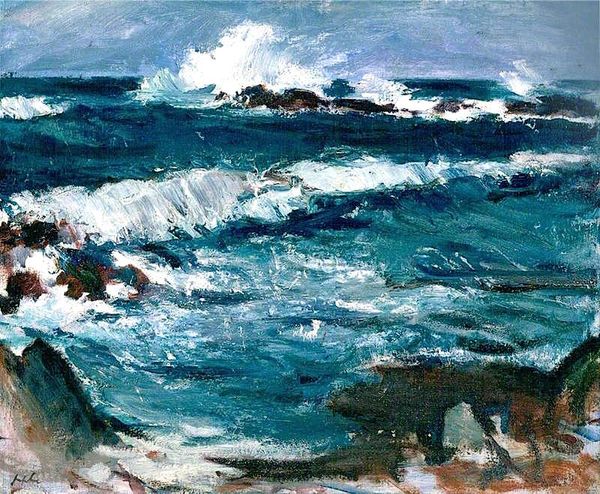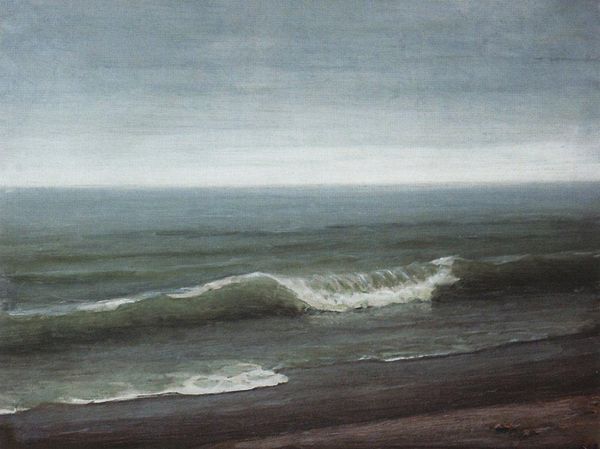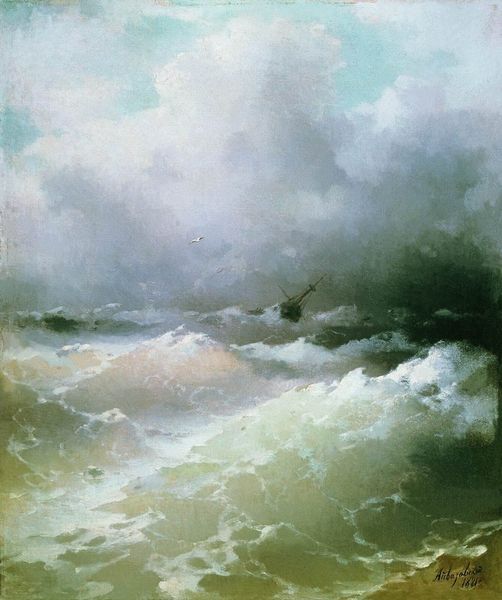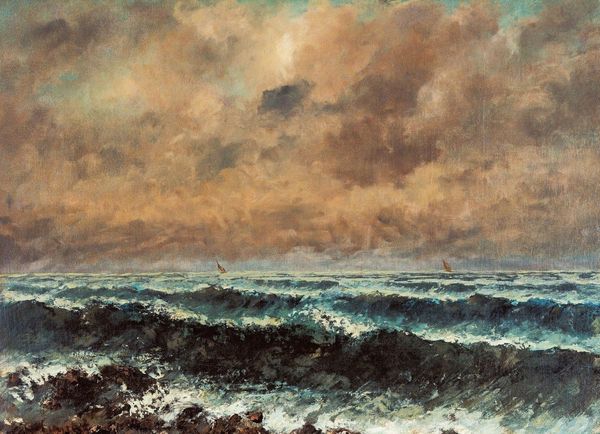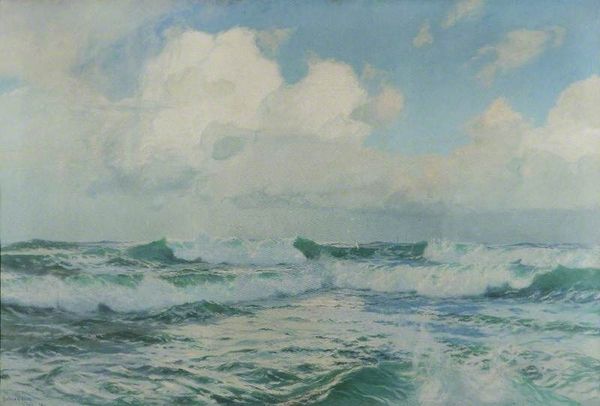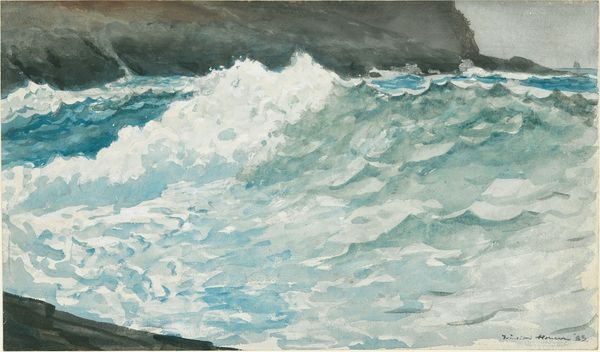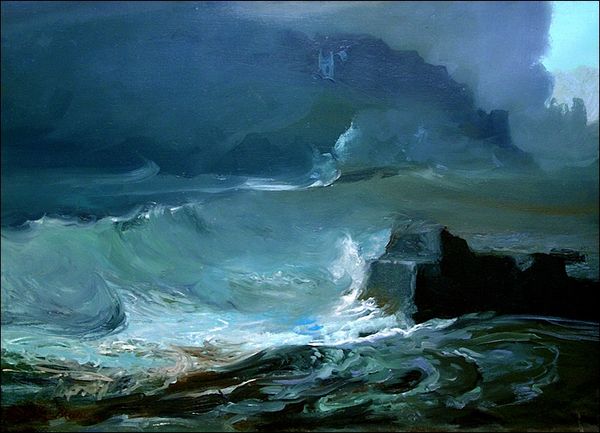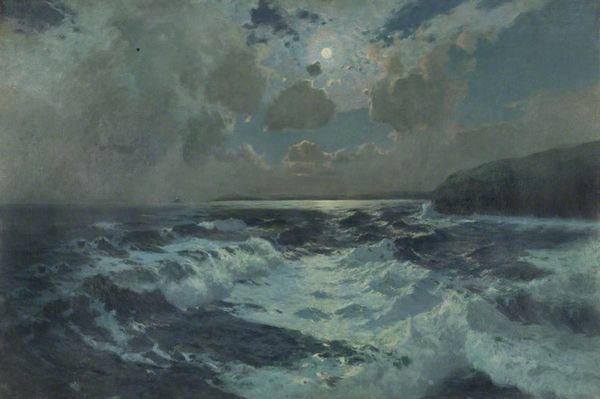
painting, oil-paint
#
sky
#
painting
#
impressionism
#
oil-paint
#
landscape
#
impressionist landscape
#
ocean
#
cloud
#
seascape
#
water
#
sea
Copyright: Public domain
Editor: We're looking at "Waves," an oil painting possibly by Arkhyp Kuindzhi. The colors are so striking! It’s got this almost luminous quality. What I find really engaging is the way the sea dominates the composition, pushing the sky to the top, as a narrow border. What’s your take on this painting? Curator: Considering this artwork, it makes me reflect on Kuindzhi’s socio-political positioning, in terms of his landscape painting and how it functioned in late 19th-century Russia. Did it serve to promote particular ideas about Russian identity, for instance? Editor: Oh, that’s interesting! I hadn’t considered its political context. Curator: The deliberate focus on nature, especially elements like the sea, often served a cultural function. Was he romanticizing the landscape, providing an escape from the realities of industrialization, or was he engaging in something more subversive, perhaps suggesting nature's indifference to human affairs? Editor: I see! So, looking at the details of the painting—the brushstrokes, the limited palette—could provide clues? Curator: Precisely. The very act of depicting the sea in a certain light could be interpreted differently depending on the viewer and the broader socio-political climate. Editor: That definitely gives me a lot to think about regarding how landscapes might reflect or even shape political sentiments of the time. Thanks! Curator: Indeed. Art always exists in conversation with its context. Exploring that connection can lead to profound discoveries about both the artwork and ourselves.
Comments
No comments
Be the first to comment and join the conversation on the ultimate creative platform.


